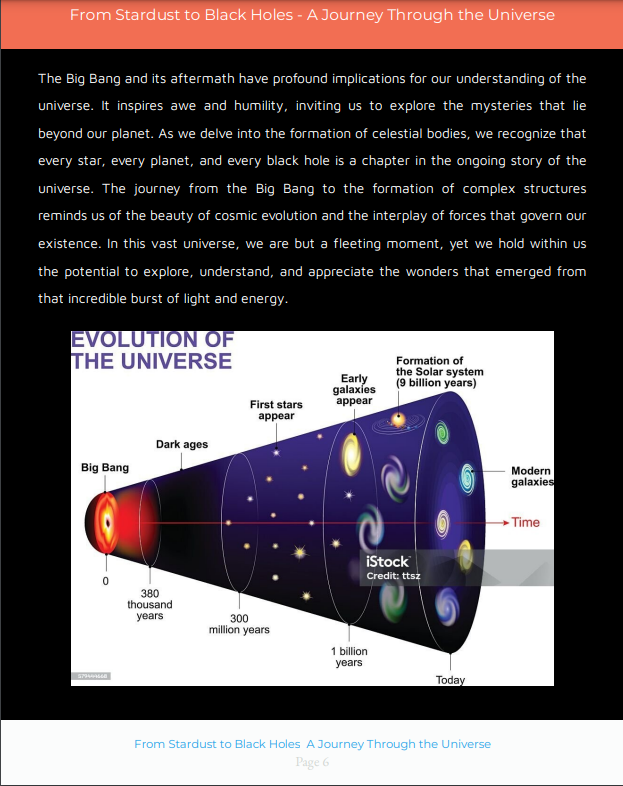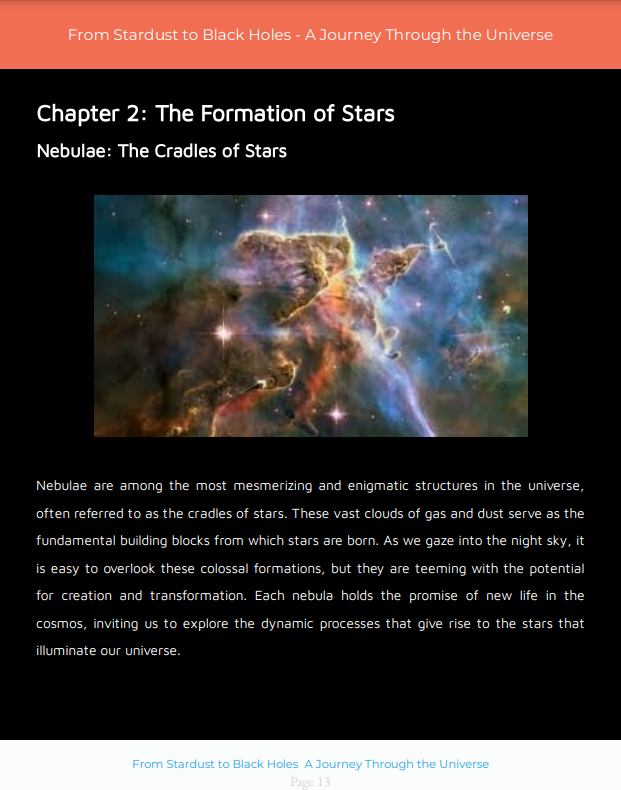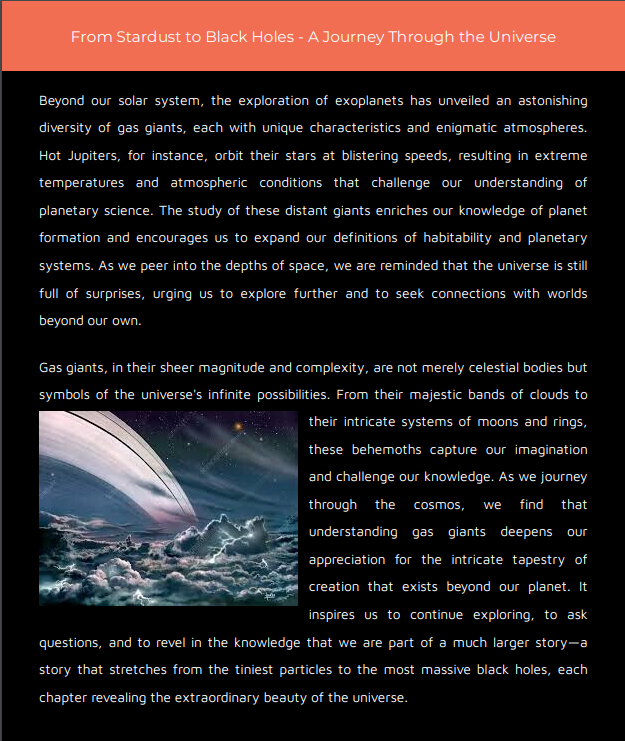From Stardust to Blackhole: A Journey Through the Universe
From Stardust to Black Holes: A Journey Through the Universe
In the vast expanse of the cosmos, every star, planet, and black hole tells a story that resonates with our very existence. It begins with stardust, the remnants of ancient stars that exploded in magnificent supernovae, scattering their elements across the universe. This stardust serves as the building blocks for everything we see today, including ourselves. Each atom in our bodies was once part of a star, a testament to our deep connection with the universe. As we gaze at the night sky, we are reminded that we are not mere observers but an integral part of this grand tapestry woven from the remnants of cosmic giants.
The formation of celestial bodies is a dance of gravity, time, and elemental chemistry. Over billions of years, clouds of gas and dust collapse under their own weight, giving birth to stars. These stars ignite, fusing hydrogen into helium and releasing energy that lights up the universe. Some stars live brief but brilliant lives, while others endure for eons. When they reach the end of their life cycles, they can explode into supernovae, enriching the surrounding space with heavy elements. This cycle of birth and rebirth creates a fertile ground for planets, moons, and even life itself, illustrating how interconnected and dynamic our universe truly is.
As we explore this journey from stardust to celestial bodies, we encounter the enigmatic black holes—regions of space where gravity is so intense that nothing can escape their pull. Formed from the remnants of massive stars that have collapsed under their own gravity, black holes challenge our understanding of physics and reality. They serve as cosmic vacuum cleaners, drawing in matter and light, and their existence raises profound questions about the nature of space, time, and the very fabric of the universe. The mysteries surrounding black holes inspire both awe and curiosity, inviting scientists and dreamers alike to delve deeper into the unknown.
This journey through the universe also emphasizes the importance of collaboration among various fields of study. Physicists, astronomers, and even philosophers work together to unravel the secrets of celestial formation and the life cycles of stars. Each discovery not only enhances our scientific knowledge but also fuels our collective imagination. We find ourselves captivated by the idea that the universe is not a distant, cold void but a vibrant realm full of potential and wonder. It beckons us to ask questions, to seek answers, and to marvel at the extraordinary processes that govern the cosmos.













